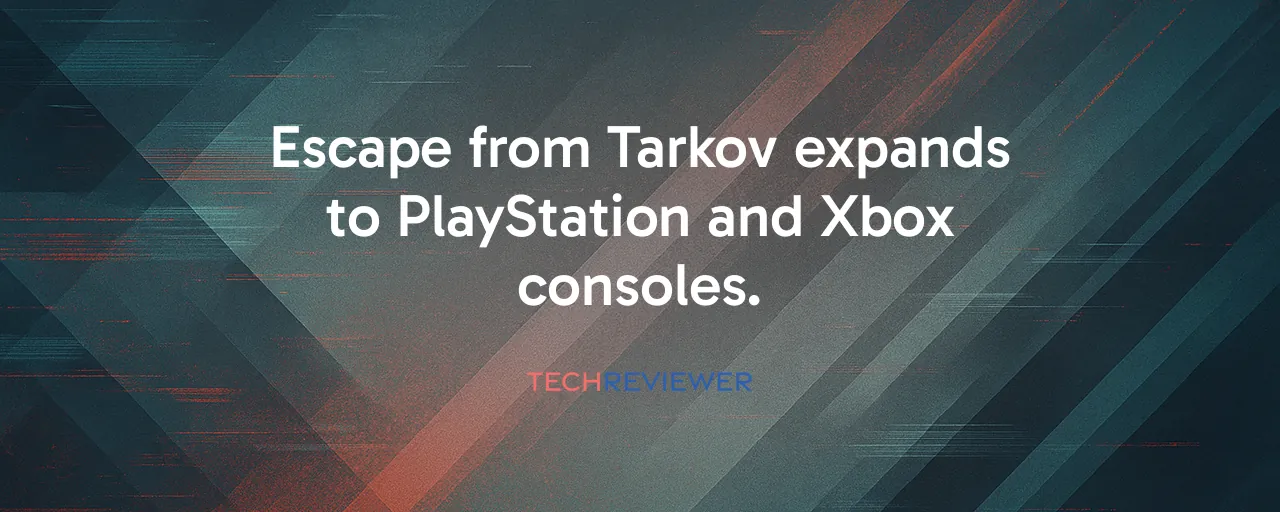A Long-Awaited Jump to Consoles
After nearly a decade of gripping PC players, Escape from Tarkov is finally eyeing consoles. Battlestate Games' studio head Nikita Buyanov confirmed in a post-Tokyo Game Show 2025 recap video released on October 17, 2025, that a console version is in active development, a move that could bring the hardcore extraction shooter to PlayStation and Xbox audiences. With the game's 1.0 release set for November 15, 2025, on Steam, this announcement signals an ambitious push to broaden Tarkov's reach beyond its 1.47 million monthly active PC players. The promise of new maps, factions, and a story with four distinct endings already has fans buzzing, but the leap to consoles introduces a host of uncertainties.
For years, console players have clamored for a chance to dive into Tarkov's unforgiving world, where every bullet, injury, and looted item carries real stakes. The game's gritty realism, from individual limb damage to intricate weapon customization, has defined the extraction shooter genre since its 2017 beta launch. Yet, translating this complexity to controllers and console hardware is no small feat. Buyanov's brief mention of the console port, tucked into a broader discussion about new games and DLC, hints at a project still in its early stages, leaving players eager for details on platforms, timelines, and how the experience will adapt.
Navigating a Technical Minefield
Tarkov's console ambitions face daunting technical barriers. Built on the Unity 2019 engine, the game demands high-end PC hardware, with recommended specs including an Intel Core i7-14700F, 64GB of RAM, and an RTX 4070 graphics card. These requirements far exceed the capabilities of even current-gen consoles like the PS5 and Xbox Series X. Complex mechanics, such as grid-based inventory management and dozens of keyboard bindings for actions like stance adjustments and medical menus, rely heavily on mouse precision and rapid inputs. Adapting these to a controller's limited buttons without sacrificing depth will require creative solutions.
Performance issues have long plagued Tarkov's PC version, with CPU-intensive maps like Streets of Tarkov causing frame rate drops even on powerful systems. Console players, accustomed to smoother experiences, may balk at similar hiccups. Battlestate's lack of official controller support on PC suggests they're starting from scratch on input design. The server infrastructure, already strained during PC wipe events, will need significant upgrades to handle console players across regions, especially if cross-platform play becomes a reality. These challenges raise questions about whether the console version can deliver the same intensity that defines Tarkov.
Lessons From Other Console Ports
To understand Tarkov's console prospects, consider two contrasting case studies. Hunt: Showdown, Crytek's extraction shooter, successfully launched on PS4, PS5, Xbox One, and Xbox Series X by rethinking its UI and controls for controllers. Simplified menus and streamlined inputs preserved the game's tension while making it accessible, proving the genre can thrive on consoles. In contrast, DayZ's console ports struggled with clunky controls and performance issues, alienating players used to smoother survival games. Its complex survival mechanics, like Tarkov's, proved difficult to adapt without compromising the experience.
Hunt: Showdown's success came from designing console-friendly systems early, while DayZ's after-the-fact port exposed the risks of retrofitting PC-centric games. Battlestate could learn from Hunt's focus on intuitive controls but must avoid DayZ's pitfalls, like neglecting optimization. With competitors like ARC Raiders planning PS5 and Xbox launches from day one, Tarkov's console version will need to match or exceed these standards to capture a new audience while keeping its hardcore identity intact.
A Community at a Crossroads
Tarkov's console expansion could reshape its tight-knit community of 5 million registered players. PC veterans, who've mastered the game's brutal learning curve over years, worry that a simplified console version might dilute the experience they cherish. The game's lack of skill-based matchmaking already pits newcomers against seasoned players, and integrating console players could amplify this divide, especially if controllers create input disparities. Community reactions to past changes, like the $250 Unheard Edition controversy in 2024, show how fiercely loyal players guard Tarkov's uncompromising nature.
The influx of console players could reinvigorate the game, much like the upcoming Steam launch aims to tap into over 500,000 wishlists. Streamers and content creators, already a driving force behind Tarkov's visibility, stand to gain from a broader audience, potentially bridging PC and console communities through shared content. Balancing these groups will be key. If Battlestate can maintain the game's depth while welcoming newcomers, Tarkov could cement its place as a cross-platform powerhouse, but missteps risk alienating its core players.
What Lies Ahead for Tarkov
The road to Tarkov's console release is fraught with challenges, but the payoff could be monumental. A successful port would introduce millions of console players to a genre-defining experience, expanding the extraction shooter market alongside titles like Hunt: Showdown and ARC Raiders. Battlestate's independent status gives them creative freedom but limits resources, making partnerships with platform holders like Sony or Microsoft critical for optimizing performance and distribution. The 1.0 release's new story, maps, and factions already promise a bold evolution, and a console version could amplify that impact.
For now, players await concrete details on platforms, timelines, and how Battlestate will tackle the technical and cultural hurdles. The console port's success hinges on preserving Tarkov's soul, its high-stakes, unforgiving gameplay, while adapting it for a new audience. As the November 2025 launch approaches, the gaming world watches to see if Tarkov can conquer consoles as fiercely as it has PCs.
